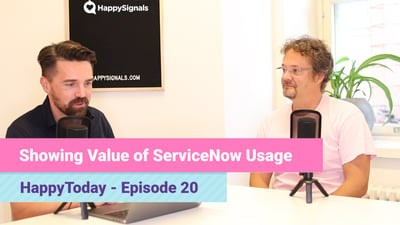IT is most beneficial when users can take advantage of the opportunities offered by IT services — as efficiently and smoothly as possible. However, the challenge lies in the fact that service users – in this case, the company’s own employees – are still paid too little attention to in IT development projects. Although users now have some involvement in application and online service development, the creation of traditional office and work-related solutions remains driven by the technology used or the process.
Business transformation and the introduction of new technologies are still being given top priority, years after the importance of end-user experiences first entered the discussion. Indicators and sanctions rooted in the IT industry’s outsourcing model are among the most formidable obstacles to user-driven development.
Forgetting or ignoring end-users seems all the more astonishing given the misdirected development that this causes, and the waste of key resources, such as time and energy.
Poorly designed IT services can cost companies dearly
Of course, technology has always played a key role in the IT sector. However, IT services include certain elements in addition to technology: processes and practices that are particularly close to service users. Since technology must be directed by thinking and feeling human beings, it is worth asking for whom IT services are designed.
Another perspective concerns how we define smoothly running services: through technical features or functions, or chiefly in terms of the ease and smoothness of the service?
The third perspective and challenge lies in how to calculate the cost of a poor end-user experience. This is often ignored because it is invisible and its impact cannot be quantified.
On the other hand, non-intuitive and complex IT services cost users time; working time for which a cost can be calculated. Costs are also incurred by work left undone due to lack of time. So, poorly designed IT services can cost companies dearly.
End users should be involved in the design of service-quality indicators
User satisfaction surveys show that end-users of IT services value speed, fluency and real-time communication, and a service that takes account of individual needs.
IT services are commonly outsourced through contracts, which tend to agree on the indicators and sanctions defined to ensure service quality. By taking too little account of service users, commonly used indicators tend to misdirect the attention of the supplier and customer.
Although end-user satisfaction is monitored, reams of other indicators move the functionality focus away from user satisfaction. The entire quality measurement model and indicators should be changed, by first asking which service quality indicators end-users would choose if free to do so.
This would make indicators more subjective and less generic, and more continuous and less fixed-term. Because indicators are often based on data, and user experiences are highly subjective, we must also change the principles underlying quality evaluation.
Do user-driven IT projects involve too much work for businesses?
Development ideas aimed at end-users tend to struggle for inclusion on companies’ development agendas. Is this due to lack of time or having too many other IT projects in the pipeline? For example, cloud services and software robotics have pushed their way up the list of IT projects.
One explanation for this may be that development aimed at end-users is somewhat off-putting, which may in turn be due to the related need to reassess processes and practices as well as changing the technology.
At the ‘coalface’, end-users tend to interact with a range of backend functions, such as financial and HR management, in addition to IT. Of course, the involvement of such functions in IT projects is of paramount importance.
On the other hand, end-user service requirements have grown over the years. Meeting such needs requires a diverse range of development measures across all service processes.
Well-functioning IT services increase employee satisfaction
Now is the time to start listening more intently to end-users. Modern Experience Management techniques can collect rich and in-depth data on user experiences. Using today’s Experience Management platforms to combine such data with other IT-services and business-related data brings us closer to a real view of how services work, and what they cost.
Taking end-users into account fosters processes and technology development in the right direction and saves on key resources, such as time, money and energy. It is also worth remembering that employee involvement in IT projects tends to promote the success of such projects. IT services and technology are such a key part of working life that satisfaction with them often correlates with employee satisfaction in general.
Well-designed services therefore promote employee engagement and willingness to recommend, both of which are highly important to modern businesses. When the end-user determines the quality of an IT service, the service will cost-effectively support the business and its development.




